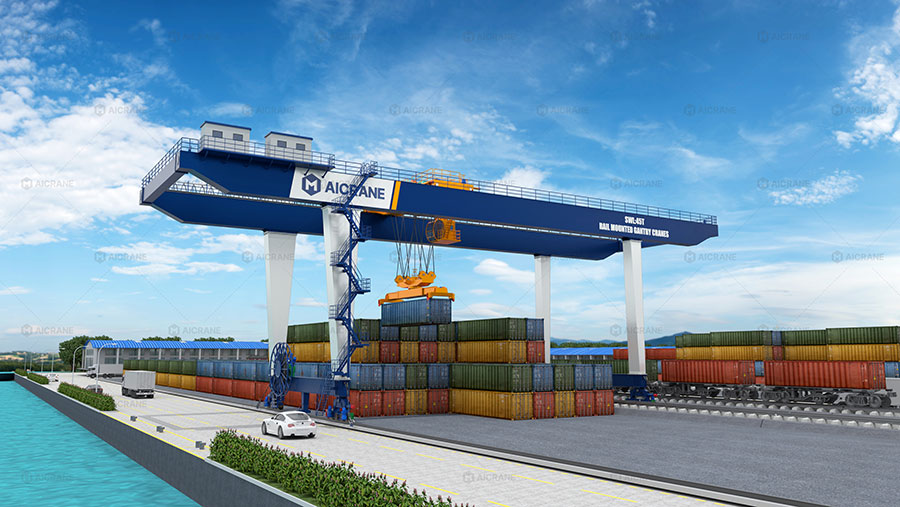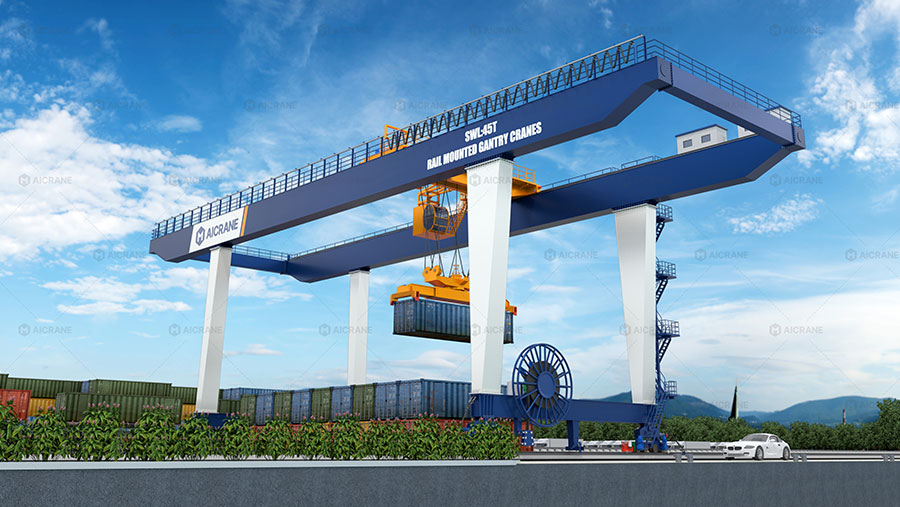Choosing the right gantry crane capacity for container handling is a fundamental decision that can significantly impact the efficiency, safety, and cost-effectiveness of port and terminal operations. The right capacity not only ensures that daily lifting tasks are managed smoothly but also accommodates future growth and operational flexibility. In this article, we will explore what container handling gantry crane capacity means, the factors influencing capacity requirements, and how to determine the most suitable capacity for different applications.

Understanding Container Handling Gantry Cranes
Container handling gantry cranes are designed to lift, move, and stack shipping containers in intermodal terminals, ports, and container yards. These cranes typically come in two main types:
-
Rail Mounted Gantry (RMG) Cranes: Operate on rails and are often used in container yards for stacking and transferring containers.
-
Rubber Tyred Gantry (RTG) Cranes: Mobile and flexible, these RTG cranes move on rubber tires and are ideal for yards with dynamic layout requirements.
Both types are engineered to handle heavy loads with precision, but selecting the appropriate lifting capacity is critical for optimizing performance and ensuring safety.
What Does Capacity Mean in Gantry Cranes?
Capacity in the context of container gantry cranes refers to the maximum weight the crane can lift under normal working conditions. This capacity is usually measured in tons and includes the weight of the container plus any lifting attachments or spreaders.
Container weights vary depending on their type and load:
-
Empty 20-foot container (TEU): ~2.2 tons
-
Fully loaded 20-foot container: Up to 24 tons
-
Empty 40-foot container (FEU): ~3.8 tons
-
Fully loaded 40-foot container: Up to 30-35 tons
Therefore, gantry crane for container handling must have a lifting capacity sufficient to handle the maximum expected container weight along with the spreader.
Common Capacities for Container Gantry Cranes
Container handling gantry cranes come in a range of lifting capacities to suit various operations. Some of the most common capacities include:
-
35 tons: Suitable for handling fully loaded 20-foot or 40-foot containers.
-
40.5 tons: A standard capacity for many RTG and RMG cranes.
-
45 tons: Offers additional safety margin and is ideal for handling heavier containers or tandem lifts.
-
50+ tons: Used in ports with high container throughput or special container types like tank containers.
The selected capacity should comfortably exceed the maximum container weight expected in daily operations, providing a safety buffer and ensuring compliance with safety regulations.

Key Factors That Affect Capacity Requirements
Determining the required crane capacity for container handling involves evaluating multiple operational and environmental factors:
1. Type of Containers Handled
Different container types such as dry vans, refrigerated containers, tank containers, or open-top containers may have varying weights. If your operation includes a mix, consider the heaviest regularly handled containers when specifying capacity.
2. Load Frequency and Throughput
High-throughput terminals handling thousands of containers per day may benefit from cranes with higher capacities to reduce lifting cycles and allow for tandem container handling, improving productivity.
3. Spreader and Attachments
The spreader beam and other lifting attachments can add several tons to the overall load. For example, a typical container spreader can weigh around 8–10 tons. This weight must be included in the total lifted weight when determining capacity.
4. Stacking Height and Span
Cranes that need to stack containers higher or span wider yard spaces may require enhanced structural design and, in turn, increased capacity to maintain stability and performance at greater outreach and lifting height.
5. Environmental Conditions
Ports and terminals exposed to strong winds, saltwater corrosion, and temperature extremes must consider environmental load factors. These conditions may necessitate a higher-rated crane or special design considerations that impact capacity.
6. Work Duty and Usage Pattern
Cranes operating continuously in demanding conditions require higher duty ratings and possibly higher capacities to withstand wear and tear. For example, a crane rated for A7 or A8 duty class will handle heavier and more frequent loads compared to a crane rated A5.
Matching Capacity to Application: Practical Scenarios
Let’s look at how different operations determine the crane capacity they need:
-
Small Inland Terminal:
A terminal handling around 100 containers per day, mainly 20-foot dry containers, could opt for a 35-ton RTG crane. This capacity handles fully loaded containers with a safe margin and keeps investment and operational costs manageable. -
Mid-Sized Port with Mixed Containers:
If operations include both 20- and 40-foot containers, including reefer and tank types, a 45-ton capacity RMG crane would provide the needed flexibility and efficiency. -
High-Volume Seaport Terminal:
For terminals moving thousands of TEUs daily, especially those considering tandem lifts or dual hoisting, 50 ton gantry cranes or more may be required. These cranes are usually custom-engineered and integrated into automated or semi-automated handling systems.
Safety Considerations When Choosing Capacity
Safety is paramount when selecting crane capacity. Undersized cranes may overload under normal operations, leading to:
-
Structural failures
-
Accidents and injuries
-
Downtime and loss of productivity
It’s essential to factor in Safe Working Load (SWL) and Rated Capacity Indicators (RCI), which prevent lifting operations that exceed the crane’s limits. Always consult local standards and international safety codes (such as ISO, ANSI, or FEM standards) when determining capacity.
Future-Proofing Your Investment
Capacity planning should not only reflect current operations but also future expansion plans. Investing in slightly higher capacity than your current needs allows for:
-
Handling newer, heavier container types
-
Accommodating customer growth
-
Adapting to changes in logistics patterns or intermodal operations
Conclusion
Choosing the right capacity for a container handling gantry crane is a strategic decision that requires a deep understanding of your operational needs, container types, throughput levels, and safety requirements. While 35 to 45 tons is typically adequate for most terminal applications, ports with heavier or more specialized loads may require 50-ton or higher capacity cranes.
Before finalizing your decision, collaborate with a trusted gantry crane supplier who can assess your site conditions and operational goals. A correctly sized crane will not only improve handling efficiency and safety but also reduce operational costs and ensure long-term performance.
If you’re unsure which capacity suits your project best, contact us for expert advice and tailored container gantry crane solutions.